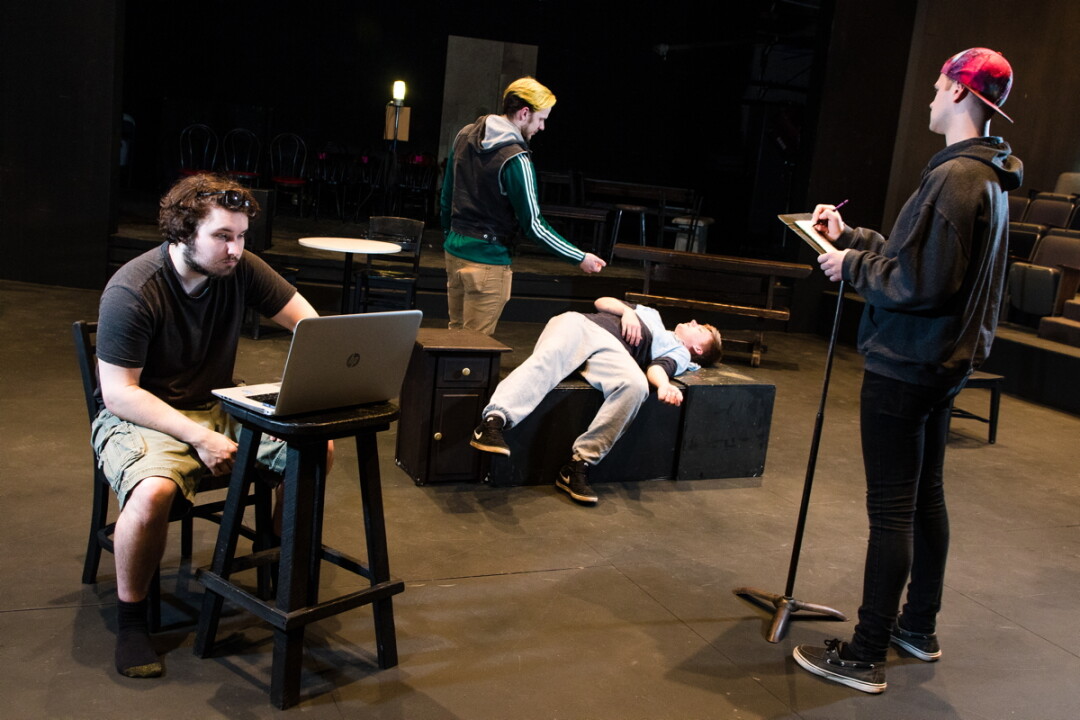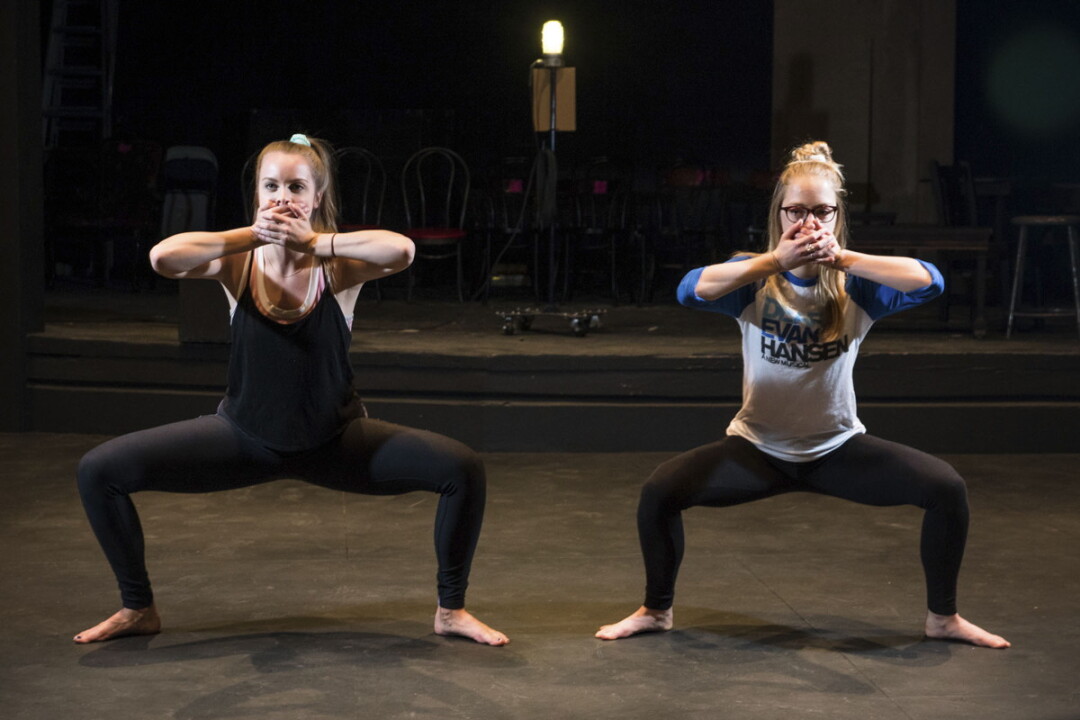Raising Visibility
UWEC students’ immersive theater presentation highlights homelessness
James Johonnott, photos by Andrea Paulseth |

Homelessness isn’t a glamorous subject to create art about, but that isn’t deterring UW-Eau Claire professor Arthur Grothe or the students involved with the UWEC production of Invisible Truth.
Upon moving to Eau Claire a few years ago, Grothe immediately noticed the city’s homeless population. “I could see both the construction of new buildings downtown and Eau Claire’s homeless population simultaneously,” Grothe said. “It was a strange juxtaposition.” He sought to create a piece of performance art that could engage audiences and students to think differently about homelessness, and he developed the idea for Invisible Truth.
“There will be several places where the audience will be invited to be a part of what’s going on around them, to be open to have a unique experience.” – director Arthur Grothe
Grothe described Invisible Truth – which will run April 27-29 in Building 13 at Banbury Place – as a devised theater piece. “Devised theater” is a burgeoning, postmodern art form that seeks to break down the rules of theater and to find the most creative way to communicate the moment to the audience. “There will be several places where the audience will be invited to be a part of what’s going on around them, to be open to have a unique experience, and to connect to the vulnerabilities of people that you wouldn’t conventionally be able to; both the performers and other audience members,” Grothe explained.
If the concept of devised theater sounds complex, it may help to think of Invisible Truth as a guided tour. The audience will be led through five different rooms, spaces, and performances that portray different elements of the overarching story of homelessness in Eau Claire.
Each of the rooms in Invisible Truth will focus on a specific component of the homeless experience in Eau Claire. One room bookends the experience, providing context to the scenes the audience is about to see, and for what they just saw. One scene shows the complications of mental illness and the impossible choices it forces people to make. Another tells the story of an LGBT youth kicked out of the home. Another performance will show how drug and alcohol addiction can affect people vulnerable to homelessness. A physical movement piece will show the dangers of sex trafficking and survival sex.
Invisible Truth is the result of over a year of research, creative design, volunteer efforts, and performance work. Groups of students from multiple academic disciplines met over the last year to research and compile stories about the homeless experience. Leah Pickhardt described the difficulty and severity of the research process: “I think one of the biggest concerns that we all have is being accurate to the issue, and I think we all were very diligent in making sure that the scenes we are writing are all based entirely in facts.”

Student performers then designed performances with creative freedom to convey those stories to the audience in whatever way they wanted. One performer, Emily Elliot, took dance classes, read texts about devised theater, and met with performers from Cooperative Performance Milwaukee to learn more about the art form. On the subject of designing a dance-based piece on the subject, Elliot explained that “The movements can’t be too ‘pretty.’ They need to show the true nature of this situation but still bring audiences into this world so they can leave with a better idea of what it truly means to be living in poverty.”
Other students took a different approach to research and tried to immerse themselves in the subject. Zachary Staads spent time in downtown Eau Claire with $3 in his pocket, wearing old clothes, and trying to find a place to sleep. For 20 hours he slept on playground equipment, ate very little, and had to walk miles to find a bathroom. “Average people reacted to me with general avoidance and disgust, speeding up if I tried to approach them or pre-emptively crossing the street,” he said. The experience was a solitary one, he explained: “I thought if I saw someone who was homeless I might get a feeling of solidarity, but there wasn’t a soul.”
The production of Invisible Truth represents a new form of theater for the Chippewa Valley. Grothe hopes that this new style will offer some advantages over traditional theater in addressing the issue. A more conventional theatrical approach can make the audience very aware of a problem, but often involves a neat resolution at the end, which betrays how difficult homelessness is for those who experience it. “My hope is that this will challenge people to incite change,” Grothe explained. “I’m hoping that the immediacy of the connection that the audience has with the performers will take people out of their comfort zone, out of the traditional environment, and break down their notions about homelessness.”
Invisible Truth tries to walk a careful line between having an agenda and coming off as preachy. “We may make some mistakes while walking that line, but that’s where we learn to improve,” Grothe explained. People are encouraged to engage, experience, and explore the space and the performances that they encounter with the hope that they will be active members of both the audience and the community.
Invisible Truth: Intersections of Vulnerability in Eau Claire • Thursday-Saturday, April 27-29 • 7:30pm • Building 13, Banbury Place, Galloway Street, Eau Claire


















